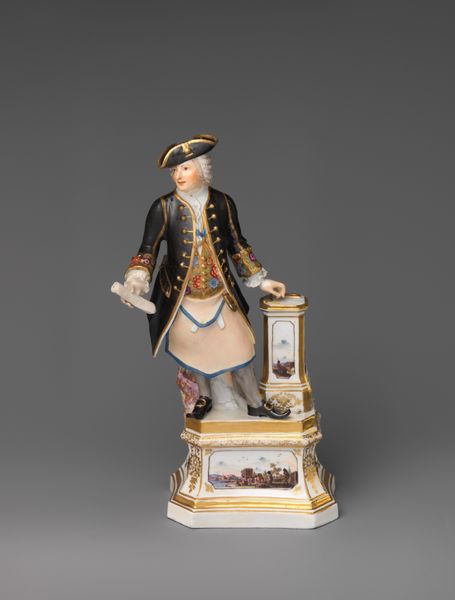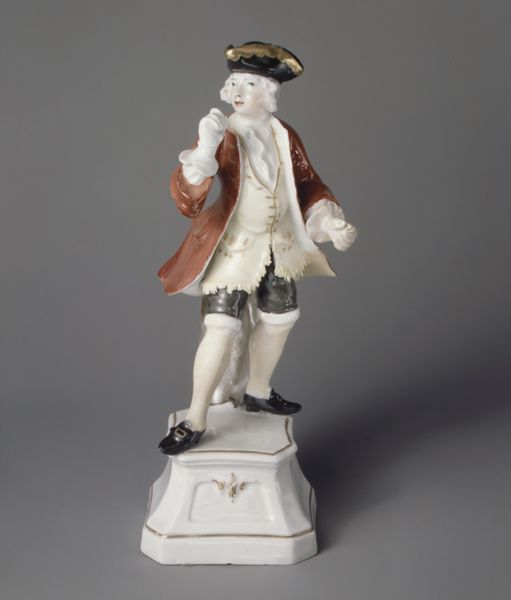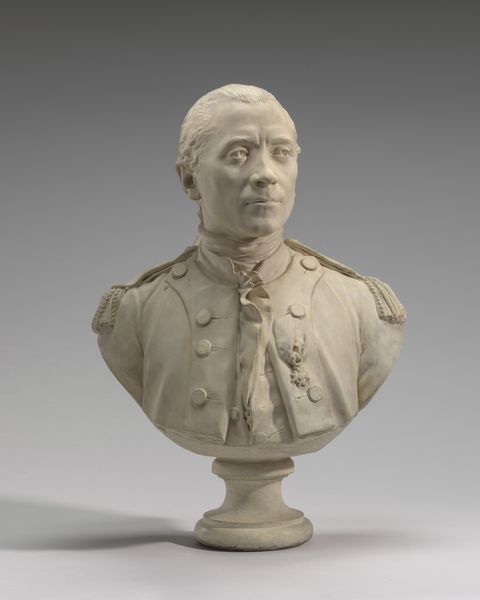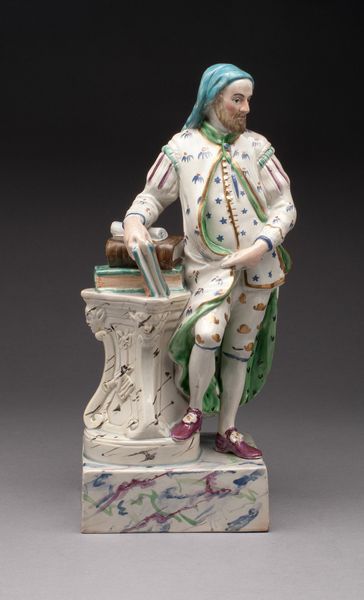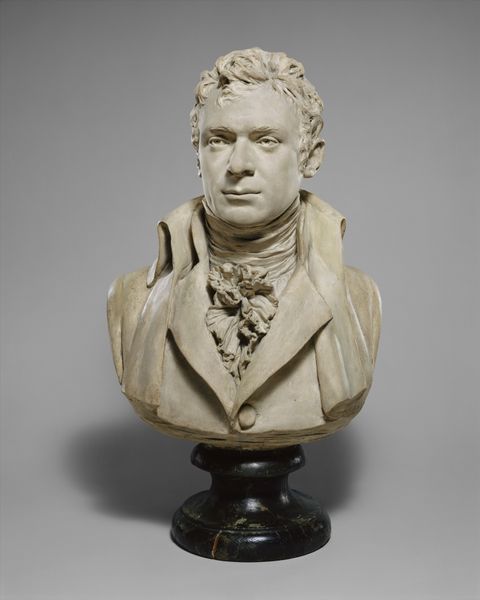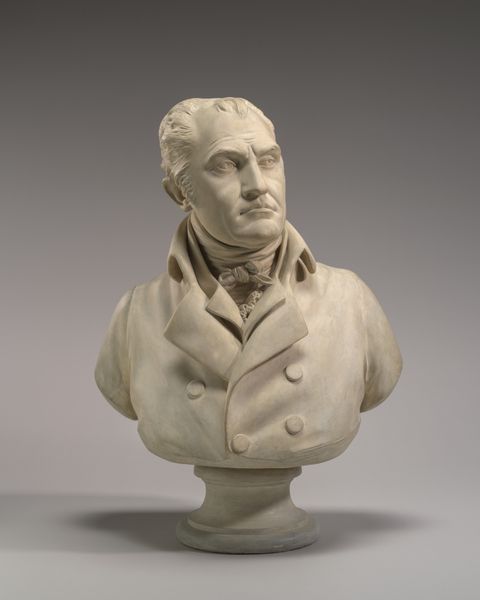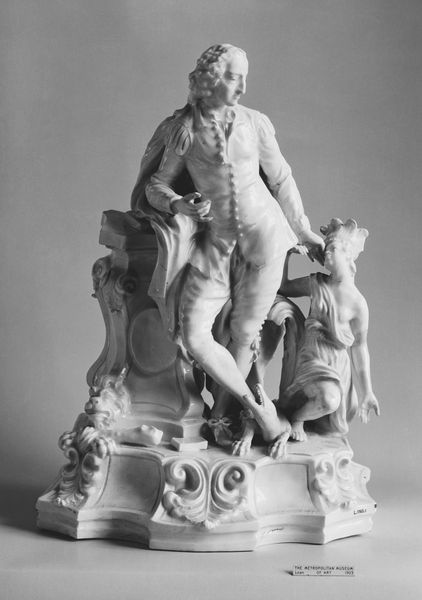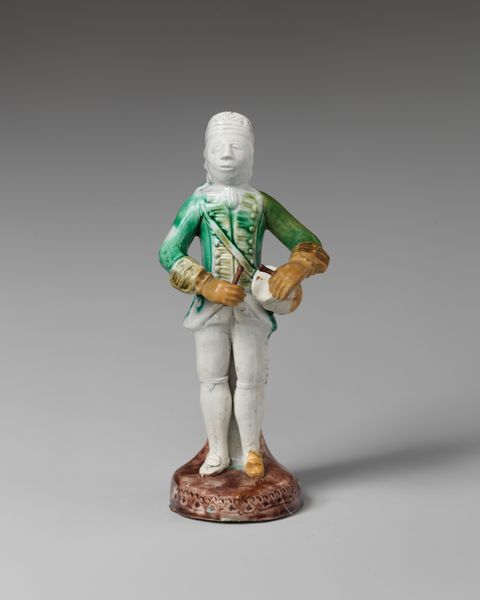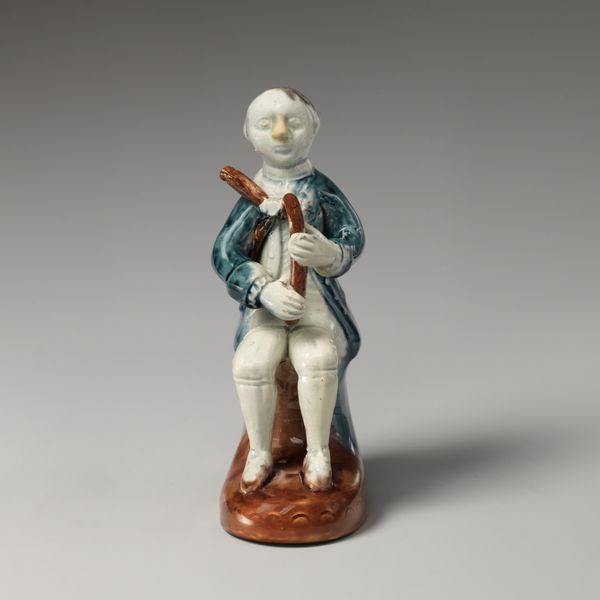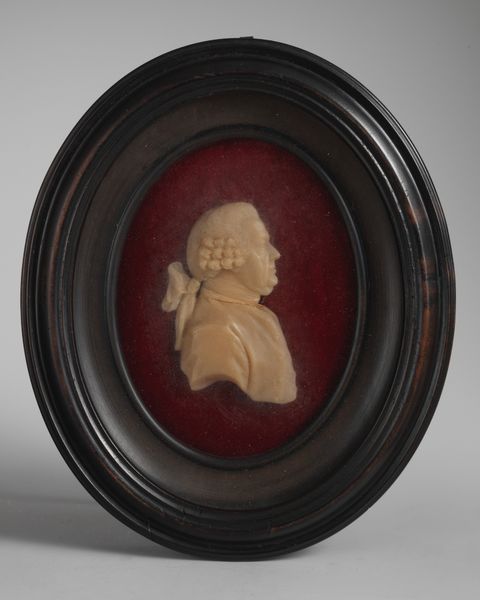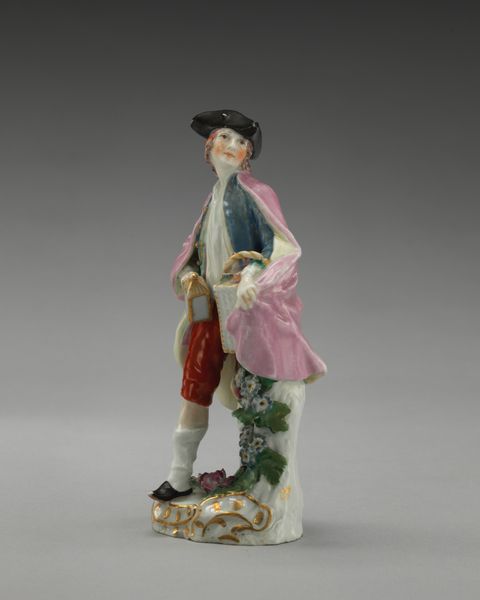
sculpture, wood
#
portrait
#
sculpture
#
sculpture
#
wood
#
genre-painting
#
realism
Dimensions: height 36.5 cm, width 31.5 cm, depth 20.0 cm, width 23.0 cm, depth 20.0 cm
Copyright: Rijks Museum: Open Domain
Curator: This fascinating work, circa 1770, is titled "A Dutch Merchant, Possibly Andreas Everardus van Braam Houckgeest". It's rendered not in paint on canvas, as one might expect of a portrait, but meticulously carved in wood. Editor: It's striking, the way the rigid material takes on this posture of relaxed gentility. Almost comical. You can see the tool marks where the wood was hewn to rough the contours. It gives an interesting contrast to the delicate carving on the details of the suit. Curator: Exactly. Its creation also mirrors the global trade this figure probably benefited from, with raw materials being transported for artisanal production here in Europe. There's an irony perhaps, that the wealth of some merchants was tied to labor and material exploitation, while these merchants are elevated to art pieces. Editor: And such a material investment of time. Think of the hours it must have taken a skilled craftsman to translate that social status into polished wood! What are the politics embedded in choosing to represent wealth through skilled hands rather than industrial output? Curator: An interesting question, especially considering this might very well be Andreas Everardus van Braam Houckgeest, a prominent figure in the Dutch East India Company. Sculptures like these often served as status symbols for powerful families, reinforcing their legacy and social standing within a community. The clothing also mirrors social standing; look at the fine buttons and trim and their implied labour in both producing these features and using them as a status symbol. Editor: And the chair is so roughly crafted compared to his coat. Almost like a rocky, raw support for refinement, a foundation literally hewn from something rough and rugged. The position of the feet looks interesting as well. One firmly grounded to indicate authority. Curator: It makes one reflect on the interplay between public image and private realities during that era, particularly how elite institutions supported their public-facing personas. In whose rooms was this merchant seated? And what conversations did he host while cast in his wooden image? Editor: It makes you wonder who profited more. The sitter in their wealth, or the crafter immortalized for posterity as we dissect the symbols of merchant-class distinction two centuries later? It offers a great case study of what it means to take the labour of craft and use it to monumentalize an individual. Curator: Absolutely, thinking about its lasting cultural imprint offers rich possibilities, even today. Editor: Indeed. Looking closer only complicates what appears at first as just a snapshot of merchant nobility.
Comments
rijksmuseum about 2 years ago
⋮
Van Braam Houckgeest was director of the Dutch East India Company (VOC) trading post in the southern Chinese port of Canton from 1790 to 1795. He possibly ordered this figure of himself during one of his earlier journeys through China. The Chinese sculptor Chitqua specialized in such clay portraits, usually of foreigners. Comparable likenesses of other Dutch merchants and captains of VOC ships are also known.
Join the conversation
Join millions of artists and users on Artera today and experience the ultimate creative platform.

